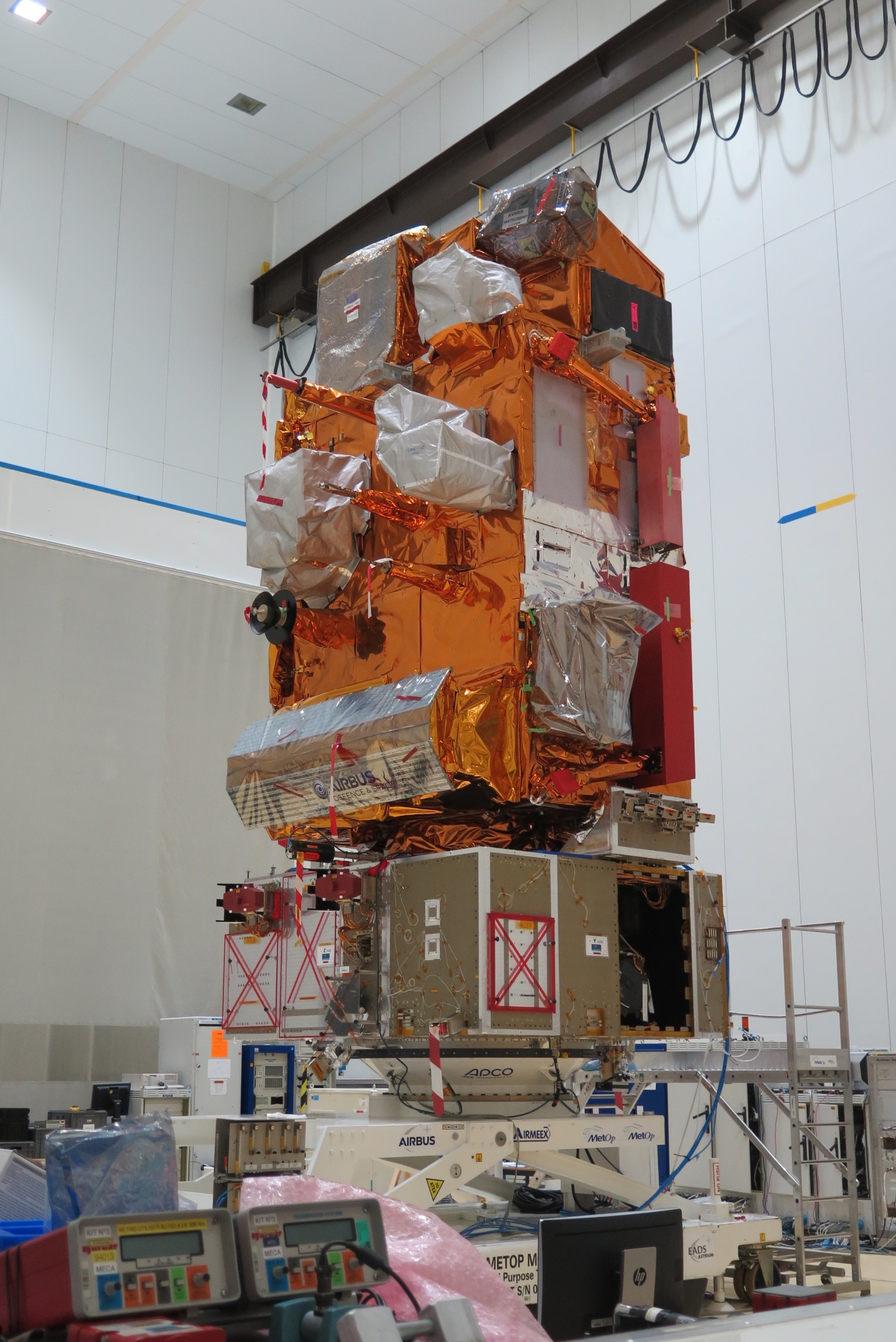
Today I visited my ESA colleagues, Stefane Carlier and Susana da Mota Silva, who are here in CSG with MetOp-C. The MetOp-C Payload Module is visible in the background, mounted on its MGSE (Mechanical Ground Support Equipment). Next week, it will be mated to the Service Module and I will have the opportunity to see it from the clean room.
I took the opportunity to visit one of the four ESA launch campaigns currently on site, MetOp-C. Once in orbit, it will be operated by the organisation Eumetsat.
Eumetsat is a European agency, created in 1986, whose purpose is to gather accurate and reliable satellite data on weather, climate, and the environment around the clock. They then deliver that information to the 30 Member States, the international partners, and to users world-wide.
The MetOp-C satellite has been shipped in three parts: the Service Platform (SVM), the Payload Module (PLM) and the Solar Array (SA). A more detailed overview of MetOp-C and its parts can be found on ESA’s portal for it here.
It is of the same family as MetOp-A (launched in 2006) and MetOp-B (launched in 2012). Both these satellites are still in operation, and today, they provide data used by meteorologists to make weather predictions. Eumetsat has used these two satellites to develop new services for their clients, and their data allows for greatly improved meteorological forecasting. From what I understood, thanks to MetOp data, reliable predictions were stretched from 4 to 5 days! MetOp-C will ensure continuity of this service until the next generation of MetOp satellites (MetOp-SG) starts to take over starting in 2022.
Having said that, we are so used to glancing at our phones these days and checking what the weather will be tomorrow or the rest of the week, assuming it will be accurate, without wondering about what it took to make those predictions. I am old enough to remember a time when the 24 hour forecast showed bright sunshine whereas in reality it poured with rain…
Charlotte Beskow
Head of the ESA Space Transportation Office in Kourou


Discussion: no comments